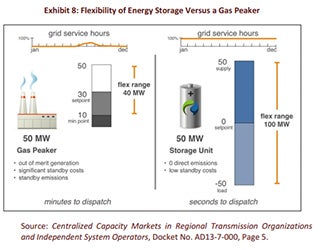
U.S. Army Major General Dana J.H. Pittard, Fort Bliss commander, gives a speech during the ribbon cutting for the solar panel project at Fort Bliss, Texas housing communities, Feb. 26, 2013. Source: defenseimagery.mil
In light of yesterday’s commendable day, the Defense Energy Summit (DES) is hosting its second annual forum in Austin, TX, and EDF is a proud sponsor once again. One of the goals for this conference is to build the foundation for a new Defense Energy Center of Excellence (DECE), which would enable Central Texas and military communities to create a test bed of clean energy technologies and policies. The DECE will help the Department of Defense (DoD) with its energy defense policy, organizational structure, education and training, manufacturing, logistics, personnel, and financing.
Texas’ capital is a logical spot to house the DECE, as Texas is home to 22 military installations – including five bases within 90 miles of Austin. Plus, the DECE could tap into the brain power at Texas universities, which are already charging forward with innovative clean energy solutions.
Leading the Charge
Although the DoD is the single largest consumer of fuel in the United States, the military has taken a significant interest in its energy footprint for one primary reason: energy security.
Transporting fuel is one of the riskiest operations when fighting on the front lines. Last year alone, the U.S. military consumed roughly 90 million barrels of oil. By powering military bases and equipment with solar energy, as well as reducing demand through energy efficiency, the military can help protect the brave men and women serving in our armed forces. The DoD can then use those avoided fuel costs for other projects, such as research and development, to meet the needs of its most critical missions. Read More




